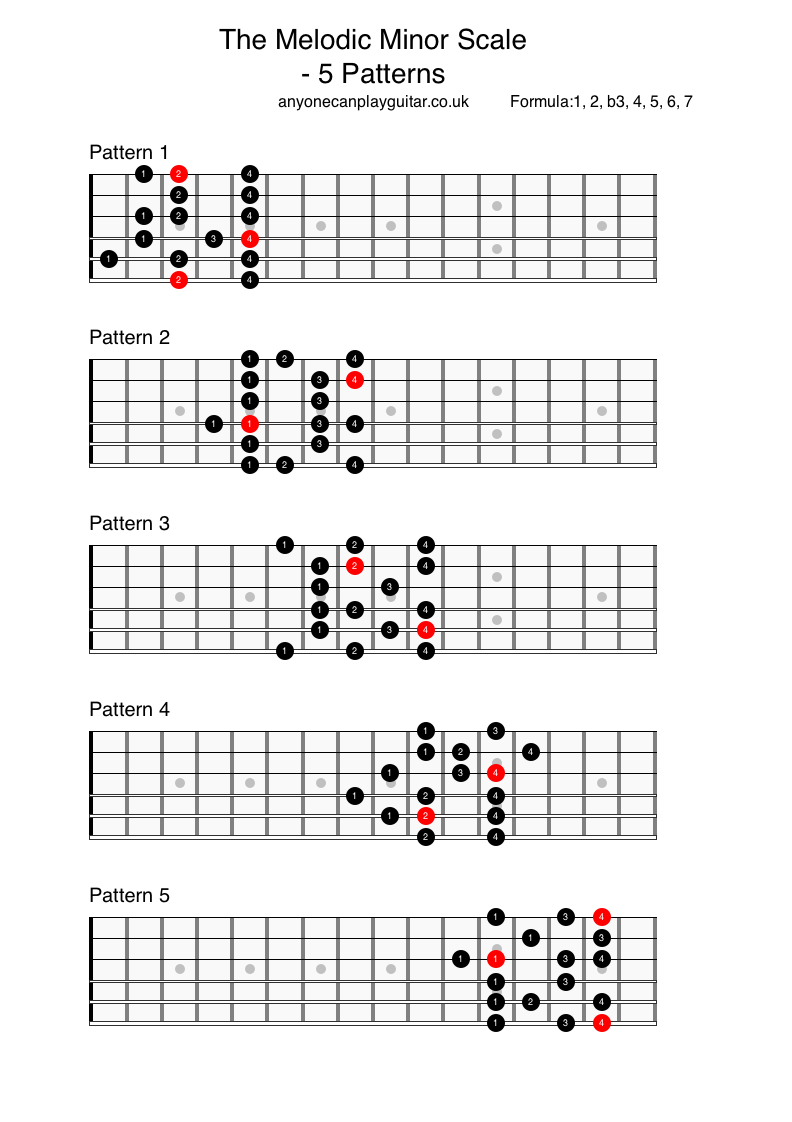

Raising the sixth and seventh tones of the A natural minor scale:įollowing the same procedure, you can form the melodic minor scale in all twelve keys. The melodic minor scale can be derived from the natural minor scale by raising its sixth and seventh tones. The melodic minor scale is one of the long-established (aka – “ traditional“) scales in music.įor several centuries now, the melodic minor scale has been associated with the minor key as a chromatic variant of the natural minor scale, which is the oldest known scale of the minor key. “Alright! Let’s Get Down With The Melodic Minor Scale…”Įvery key has its scale which outlines all the notes in that key – major scales for the major key and minor scales for the minor key. …which can be formed by playing all the white notes on the keyboard in a regular succession, from C: A common example is the C natural major scale: In a nutshell, a succession of notes in ascending and descending order using a fixed formula produces a scale. The ladder can be used to ascend or descend and so is the musical scale.The horizontal support for the foot (aka – “rungs”) on the ladder are the notes and traditional scales usually have eight rungs.

The musical scale looks like a ladder in ways more than one: Check it out:Īs simple as this definition may seem, I appreciate it because it takes us back to the Latin word scala, where the English word ‘scale’ is derived from. Jermaine Griggs has given us the most basic definition of a musical scale. Let’s start from the scratch by defining a musical scale. At end of this lesson, I’ll be really sure that you’ll be able to effortlessly play the melodic minor scale with both hands, and in all twelve keys. Today’s lesson will start out with a review of the melodic minor scale, before proceeding to its fingering for both hands. Although we’ve covered the melodic minor scale in a previous post, we’ve not dedicated a lesson to learning its fingering. See also harmonizing minor scales into chords.You want to learn the proper fingering of the melodic minor scale in all twelve keys and that’s why you arrived at this page.īelieve it or not, playing a given scale in all twelve keys can be frustrating without a proper understanding of the right fingers to play the scale with. If you play in the A Minor you will get a gloomier and kind of melancholy sound compared to C Major. You don't need to memorize all relative keys, if you want to know the relative minor just go to the sixth degree in the major scale or, the other way around, to the third degree in the minor scale to identify the relative major.Īlthough the notes are the same, there is a difference between two relative keys: the tonic (first tone in the scale) is different and this leads to different sounds. G Major is relative with E Minor, F Major is relative to D Minor here are all relative keys listed: Relative keys have, as said above, the same notes and can be found for all major and natural minor scales. The Minor scales in graphic compilation are available in the member area.Ī collection of all Natural Minor scale charts can be downloaded as a PDF-file. Still, these names are not used adjacent to the diagrams to avoid confusions.įingering: 1 = Thumb | 2 = index finger | 3 = middle finger | 4 = ring finger | 5 = little finger.įormula: Whole, Half, Whole, Whole, Half, Whole, Whole This is theoretically correct since it is preferable to avoid the same letter twice. * Concerning the use of B#, Bbb, Cb, Ebb, Fb and E#.


 0 kommentar(er)
0 kommentar(er)
